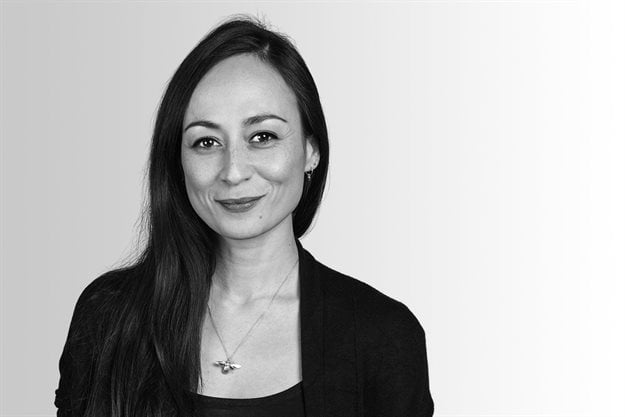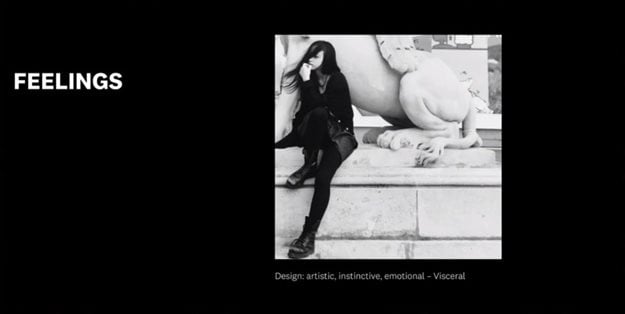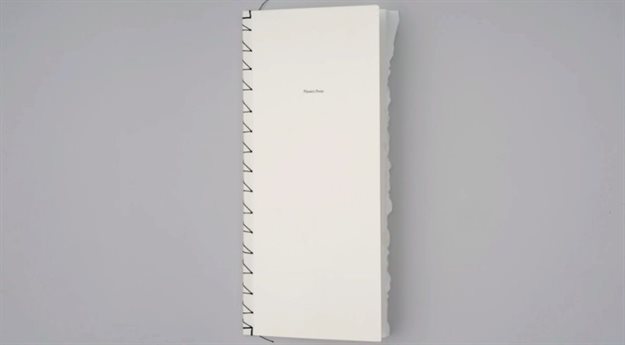#Loeries2020: Conceptual thinking is at the heart of everything

When she was asked to do a session, she thought about this year’s theme, which is about creating change. Thinking around that theme, she wondered how she might have changed as a designer over the years and noticed a bit of a shift in the way she approaches her work, and the work she does.
First, she provided a bit of background to her career as this is instrumental in understanding her approach to design.
She started out studying at Central Saint Martins in London. Initially, she wasn’t quite sure which area of design she’d go into, but soon discovered the kind of design she really loved. This is where she figured out that she was a graphic designer. She now considers herself a graphic designer first and foremost.
When she graduated, she joined an agency called Johnson Banks. “That’s where I really learnt the craft, a lot of print, posters, books, identities and over the years more and more branding work.”
And then, a little bit later, she joined The Partners. “The Partners became one of the agencies that became Superunion, and that’s where I really started directing work and leading a creative team.”
She said that in all the time she’s been a designer, there’s one word that sums up her approach to creativity, and that is ‘ideas’. “What I mean by that really is that conceptual thinking is at the heart of everything that I kind of think of in terms of my approach to design.”

Going back to being a student, there were a couple of books that were influential for her as she was starting out:
- A Smile in the Mind by Beryl McAlhone. This book came out of the agency, The Partners, where she later worked, but she discovered it when she was studying at college. “It introduced me to the idea that you could have visual ideas, that you could create clever connections with words and images that could really make a memorable connection with your audience, and I really started to love that way of working in graphic design.”
- The other book, Problem Solved was written by her first boss, Michael Johnson. “This was actually published shortly after I graduated and was already working for Michael, and it was all about kind of approaching design as a problem-solving exercise and then finding the ideas, these kinds of hidden gems and ways to solve those problems.”
In recent years, she said she’s identified a shift, remembering a particular person that she wanted to get back in touch with in terms of the work that she’s doing. “That person is ‘teenage me’. I was probably pretty stereotypical, kind of moody, slightly gothy, kind of arty teenager, and I guess when I look back at this picture of me as a teenager, before I started graphic design, I was already into art and all I wanted to do was draw.

“I loved art, I loved music and I loved film and I think at that age, as a teenager, I already understood that sometimes you responded to visual creativity instinctively and kind of quite viscerally, and it wasn’t always rational or intellectual, and so I guess maybe what I found was that sometimes it’s alright to have the kind of ideas that are more emotional and less intellectual.”
So, she talked through three projects and different ways in which she sees this slightly more emotional side coming through in the approach to the work and the work itself.
The first couple of projects are branding projects and the third one is personal and I’m not going to show you the end product but the messier, behind the scenes sort of thinking that goes into this work as well.
The first was Shakespeare’s Globe, which is a theatre and cultural centre in London on the South Bank of the Thames, which was about capturing the visceral nature of a real physical place, and one of the things she particularly loved about this was the physicality of the project.

The next project was BBC2, a UK television terrestrial broadcast channel and the project was all about evoking moods and trying to put the viewer into a particular frame of mind. “BBC2 had this very iconic identity for 27 years and it was very much loved by the public and the design industry as a real classic of British broadcast design, so it was quite a scary project to undertake, but what we were trying to do was reflect what BBC2 is today, and that is the channel in the UK that commissions the most original content.
"They actually create new programmes and formats much more than any other terrestrial broadcaster, and it’s a real test bed and experimental place, and what this means is that there’s a huge amount of diversity in the kind of programmes they can create. So, there isn’t one kind of BBC2 programme, which meant that they wanted to kind of figure out how to talk to people about what they did, make sure that they had attribution and that people recognised that it was coming from BBC2.
"So, the brief to us working really closely with BBC’s in-house creative agency, BBC Creative was to basically reflect that fact that BBC creates really stimulating content, and this was a super collaborate project.”

The last project was a much smaller, personal project called Naomi’s Poem. “This is a kind of collaboration between myself and a writer and creative director, a poet, a guy called Tom Sharpe. We’ve collaborated a few times because I really love his poetry and also I find it a really interesting challenge to respond to poetry as a creative brief for design.
"And just by kind of having that as the brief, how do I express something or support or reflect poetry, was so different to the kind of rational, literal ideas thinking that I might have to employ in other projects where logic and reasons for everything need to be really clear and communication must be absolutely single-minded and clear. It was just really interesting to have this freedom, an open brief of an interpretation of poetry as a starting point.
"So, I really love doing this kind of thing. And this poem was probably the hardest to design because it was a super personal, really serious subject matter." So, she took on the challenge of working with Sharpe to bring this to life in a piece of print and talked us through the way they went about this.

She went into detail, talking us through each of these projects and how they picked up on the idea of the more visceral and emotional response, but in summary, she concluded:
“I guess trying to capture the spirit of a place that has so much history, that has so much storytelling behind it, that is messy and dynamic, and trying to kind of encapsulate that in a visual identity system which still works was the big challenge for the globe.
“For BBC2 it was all about that great scope of human emotional that we all share and that can be expressed through abstract imagery and motion and sound in a way that can connect to anybody and kind of bypasses the kind of intellectual and rational side of our brain.
“And then the last piece was about trying to just really reflect something very serious and very emotional in a way that creates an experience for the reader of a poem.”
For more our Loeries Creative Week coverage, go to our Loeries special section.



























